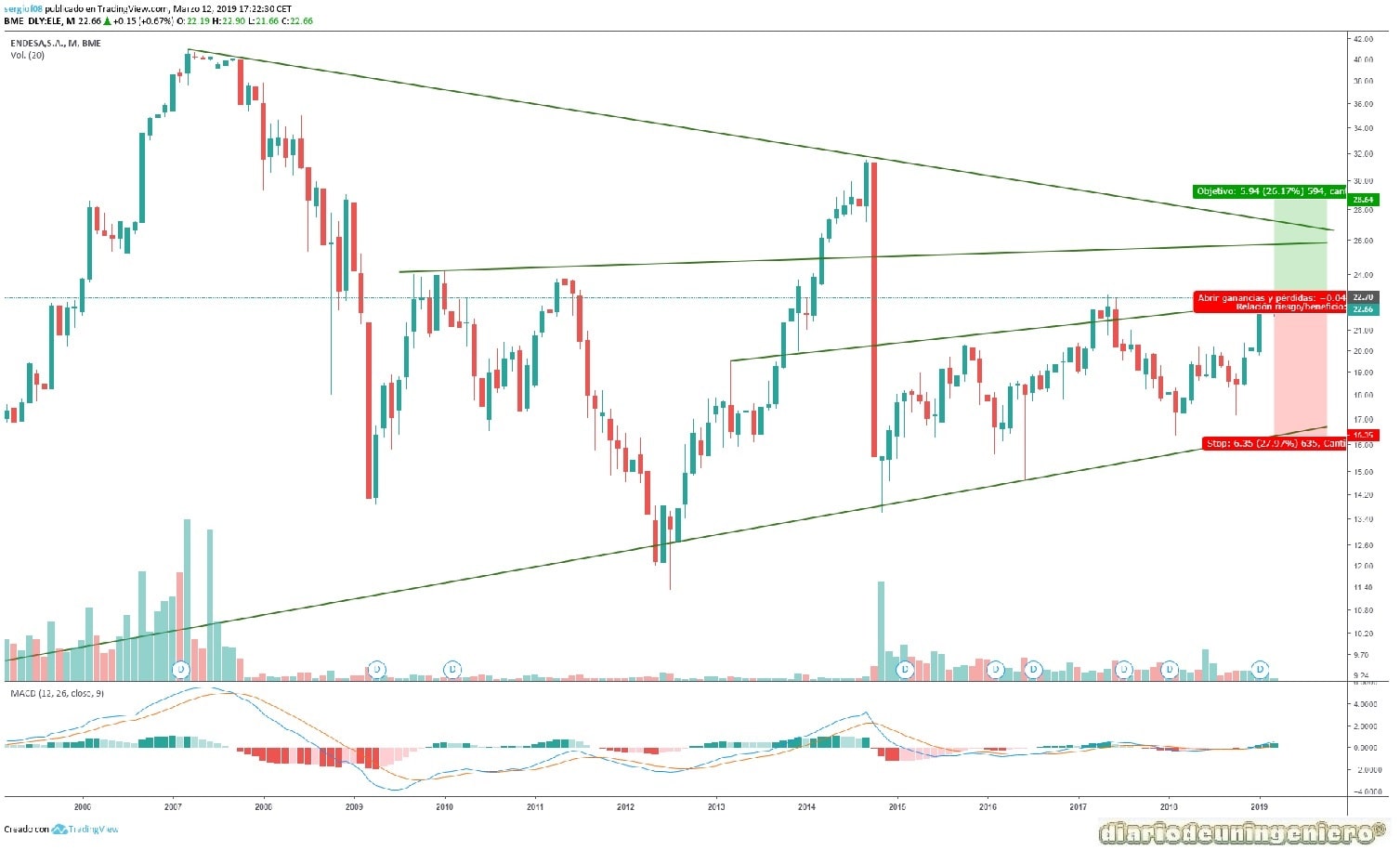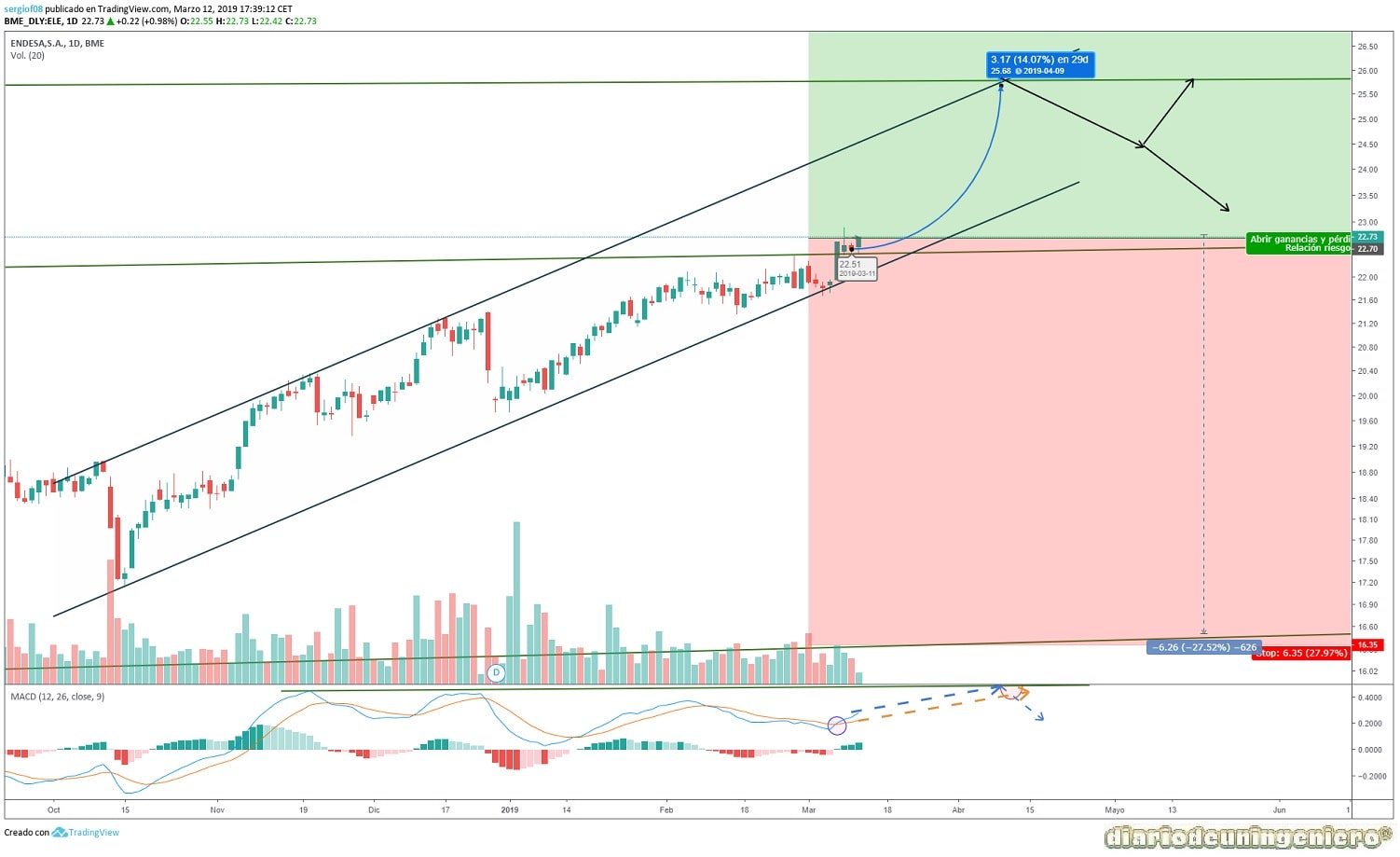Endesa is a Spanish company that operates in the energy sector, specifically electricity and natural gas. It is therefore a competitor of Naturgy in natural gas and of electric companies such as Iberdrola, and Red Eléctrica.
It was founded in 1944 under the name of National Electricity Company by the INI, like Enagás. The first floor would be built in Ponferrada, capital of El Bierzo. At that time Spain needed a lot of energy to return to industrialization after the civil war. That area was strategic since almost all the coal mines are in León and Asturias. In addition, there was a lot of dependence on hydroelectric energy and, therefore, on the climate. Franco would be in charge of building many swamps to optimize the energy of the hydroelectric plants and ensure the water in the event of any drought.
From that moment, it would start to implement mobile power stations throughout Spain and finally, in the 80s, with the arrival of democracy, it would start buying small private companies to become a giant in the energy sector in Spain. At the end of the 90s with the arrival of Jose Maria Aznar, the company would be privatized and given as many other companies to people close to the party. It would be in 2007 when the bad management of politicians in Spain, the before and after, the company would be oped by Enel, Italian company going to control 70% of the company . Thus, Endesa would remain in foreign hands after having rejected the merger with other Spanish companies such as Gas Natural or Acciona.
The energy sector is one of the most criticized by political groups outside the bipartisanship, such as Ciudadanos o Podemos, since they show the worst in Spain. The oligopoly and the control of prices by a few people who act as judges and who are usually or have people in the front row in politics . For this they use their influence and power, buying politicians who leave the government to enter their company and can make decisions in other governments. The reality is that Spain has the most expensive electricity price in Spain despite the sector being liberalized. Citizens are the most critical of this policy, but unfortunately interventionism controls the country .
Below I present the data of fundamentals that I find most important:
| ### | 2014 | 2015 | 2016 | 2017 | 2018 |
|---|---|---|---|---|---|
| Debt/ Cash company | Total Debt (M) | 5.420 | 4.323 | 4.938 | 4.985 | 5.770 |
| Beneficio/Share value | |||||
| Capitalization(M) | 19.613 | 21.307 | 18.904 | 21.312 | 23.864 |
| EBDITA (M) | 2.795 | 2.737 | 3.155 | 3.184 | 3.372 |
| PER | 12,76 | 20,11 | 17,49 | 15,24 | 13,65 |
| Net Profit (M) | 1.086 | 1.411 | 1.463 | 1.417 | 1.524 |
| Dividend | 1,02 | 1,33 | 1,38 | 1,41 | 1,44 |
| Debt/EBDITA | 1,57 | 1,43 | 1,40 | 1,59 | 1,71 |
From the table of fundamentals we can see how the capitalization of the company has been oscillating but always around 20,000 million euros. Although it should be noted the annual dividend is around 1.5% of capitalization, having grown by 5% in these 5 years. Like Enagás, net profit and EBDITA seem to have stagnated since 2014, although the debt has picked up. Therefore the benefits are quite good but the debt / EBITDA ratio has slightly worsened last year.
If we look at the long-term chart, we see how they continue to develop a bullish channel with a clear support now in the vicinity of € 16 and a resistance at € 26. This resistance has only been reached once since the OPA in 2007. Recall that the price that set the OPA and with which Enel paid control of the company is well above the value that has marked these years. This is in sum because of the power struggle he did against the other great Spaniards. In the end they did not decide to buy it but Enel had to make a disbursement and also surely has not achieved the objectives that he had when landing in Spain, although great alliances especially in renewables.
To make a more exhaustive analysis we will have to go to an analysis in daily and not monthly candles since everything is quite adjusted. From the graph you can see at a glance that there is much more to lose than to win.
To make a more exhaustive analysis we will have to go to an analysis in daily and not monthly candles since everything is quite adjusted. From the graph you can see at a glance that there is much more to lose than to win.

In the short term you can see the bullish channel that has been developing since September 2018. This channel is on the verge of dealing with a historical resistance such as 23 € to which it will cost much to exceed. Although the MACD indicator is more likely to try to assault the € 26 that back to back. In this case, the strategy would be to maintain and not enter, and to distribute as the channel passes.
This value is too dangerous before an election than any other, along with Gas Natural. So the retailer should be leaving little by little and re-enter if the technician returns to give potential value since right now there is only 15% and below there is enough risk of falling almost 40% .

© 2016 - All Rights Reserved - Diseñada por Sergio López Martínez